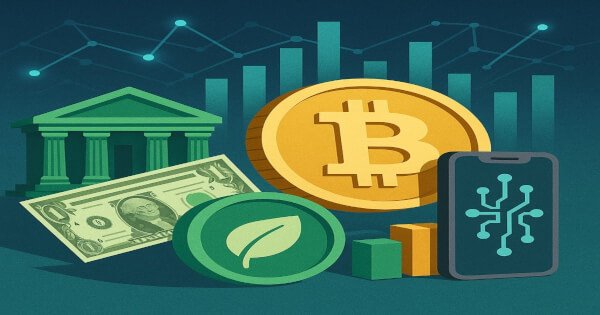DePIN: How Tokens Are Funding Real-World Hardware-from 5G Radios to Dash-Cam Maps

Khushi V Rangdhol
Jun 24, 2025 06:27
DePIN is turning users into infrastructure builders—Helium (5G), Hivemapper (maps), and DIMO (vehicle data) reward contributors with tokens. Cutting upfront costs, but tax and import hurdles remain.
“DePIN” (decentralised physical-infrastructure networks) is the catch-all label for Web3 projects that pay users to install or operate real-world hardware. Instead of raising billions up-front like a telecom or mapping giant, the network issues tokens to whoever provides coverage or fresh data. Three live projects—Helium, Hivemapper and DIMO—show the model is no longer theory.
Helium: Paying for wireless coverage
Network size. Messari’s State of Helium Q1-2025 report counts 63,806 active hotspots—LoRa IoT, Wi-Fi and 5G combined.
5 G footprint. Helium documentation lists more than 7,000 CBRS small-cell radios across 1,200 U.S. cities.
CBRS sunset. A community vote (HIP-139) set 1 March 2025 as the end of rewards for CBRS; radios can swap into a Wi-Fi programme.
Hotspot owners stake HNT (now MOBILE/IOT sub-tokens) and earn emissions tied to data transferred. Messari logged 1.14 petabytes of carrier traffic in Q1 2025, up 139 % quarter-on-quarter. That usage growth is what convinces Nova Labs to keep subsidising hardware with tokens instead of cap-ex.
Hivemapper: cars that earn tokens for fresh street imagery
Hivemapper sells a purpose-built dash-cam; drivers who upload video earn HONEY tokens. Company blog posts put progress at:
≈ 130 million total road-kilometres mapped by late-2023, just one year after launch.
About 6 million unique kilometres—roughly 10 % of global roads—hit in early-2024.
Raw clips feed a machine-vision pipeline that extracts signs, lane markings and curb data; paying clients license vector tiles. The incentive design flips Google Street View’s cap-ex model: rather than own every car and camera, Hivemapper rewards a global crowd of drivers willing to film their daily commute.
DIMO: Crowd-sourcing vehicle telematics
DIMO rewards drivers for streaming real-time diagnostic data. A March-2025 community update notes the network has 2,000 cars actively connected and 25,000 vehicles registered in the app. Devices such as the new “DIMO Macaron” ship with Helium LoRa WAN radios, cutting cellular fees to deliver always-on data for about US $99 (hardware plus three years of connectivity).
Developers can already query anonymised trip logs; future apps range from usage-based insurance to real-time battery-health marketplaces.
Why token incentives matter
Up-front capital shrinks. Thousands of individuals buy small-cell radios or dash-cams instead of a single corporation funding national roll-outs.
Granular coverage. Tokens flow only where gaps exist—rural road segments, basement parking lots—because rewards decay in saturated zones.
Open access to the data pipe. Anyone willing to pay in fiat can license Helium bandwidth or Hivemapper tiles; token holders don’t get exclusivity, just upside for boot-strapping the network.
Headwinds to clear
Regulation looms largest. India, for example, taxes token gains at 30 % and withholds 1 % on every trade; that can turn a micro-incentive model into a compliance headache. Hardware import duties also bite: ASIC-grade radios or dash-cams generally fall under HS 8473 and draw a 15 % basic customs duty after the 2024 electronics-tariff update.
On the technical side, multi-chain fragmentation raises bridge-risk: Helium’s MOBILE runs on Solana, Hivemapper’s HONEY on Solana, and DIMO on Polygon—each with its own tooling and custody quirks.
The road ahead
Helium will spend the rest of 2025 pivoting its mobile strategy from licensed CBRS to Passpoint Wi-Fi, hoping to cut deployment friction; Hivemapper aims to double unique-kilometre coverage via “Open Road” bounty seasons; and DIMO plans to cross 100,000 connected cars once its Macaron ships at scale.
Taken together, these projects show that blockchains can finance physical build-outs that would be uneconomical—or simply too slow—under traditional models. If regulators can accommodate token rewards without smothering them in tax friction, India and other emerging markets might soon see rooftop radios, dash-cams and vehicle dongles earning crypto for serving real-world needs.
Image source: Shutterstock













